October 2018- January 2019
Our three members of design research team worked on Eventbrite. Eventbrite is so popular among the People who wants to develop emotional intelligence in the communities’ people and to build and strengthen relationships in a diverse social circle. We dive into the Eventbrite to find out the mystery of its popularity. How people are benefited from them.
Finally we were able to design an app with lots of user demand features including community blog.
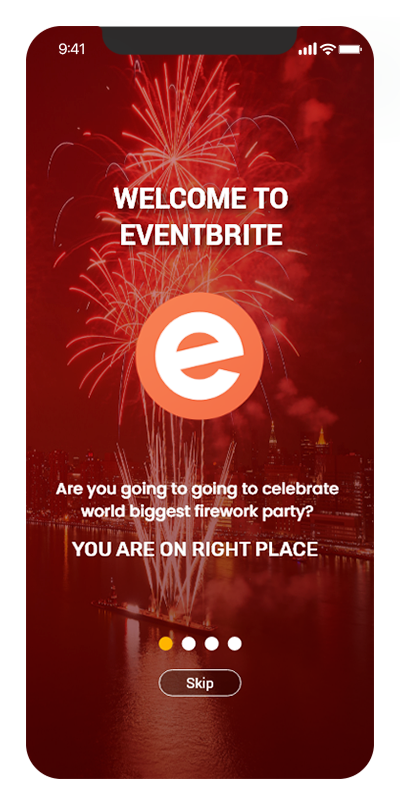
Our research focuses on understanding how Eventbrite attendees make decisions when RSVPing for events, as opposed to event organizers. We aim to explore whether attendees seek additional information about events or organizers to aid their decision-making process. To achieve this, we conducted client interviews, user testing, qualitative questionnaires, and quantitative research. Our key research questions include:
What influences attendees’ decision-making?
Does event popularity matter?
Do attendees need more information to feel confident in their choice?
Are they concerned about event organizer credibility?
Our methodology involved one-on-one interviews, desk research, and social media analysis to gather insights. The findings will help us identify user challenges and design solutions using Design Thinking to enhance the RSVP experience.
Our research followed a Design Thinking approach to understand how attendees make RSVP decisions on Eventbrite.com and the Eventbrite app. We conducted user research to explore their decision-making process and identify potential improvements. Our team analyzed Eventbrite’s role in fostering social connections, uncovering key user needs and challenges. Based on our findings, we designed an improved app concept incorporating user-demanded features, including a community blog. This iterative process ensured that our final prototype aligned with real user needs and enhanced the overall user experience.
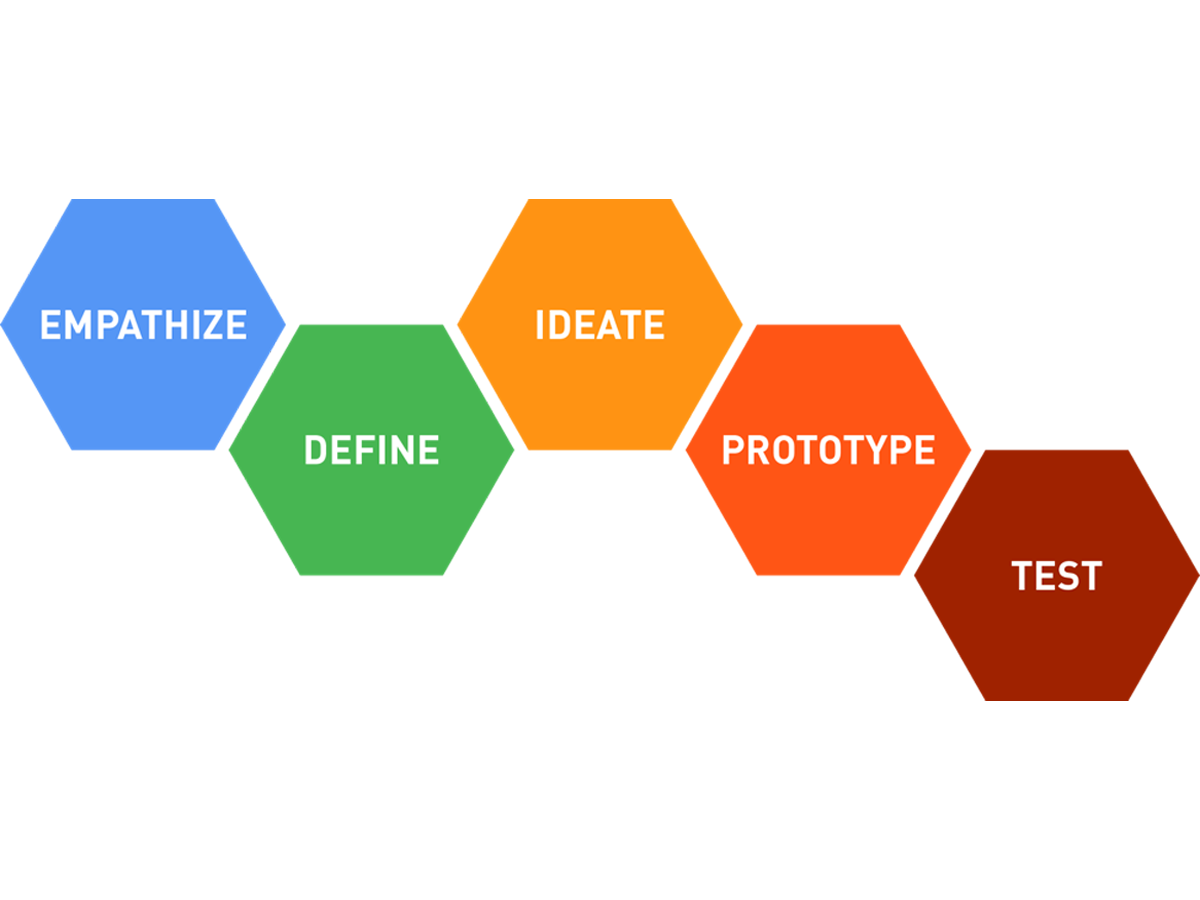
The research objectives focus on understanding how attendees make decisions to RSVP for events on Eventbrite, identifying factors such as event popularity and organizer credibility. The study aims to determine whether attendees would benefit from additional information to assist in their decision-making process and to uncover potential challenges they face, with the goal of improving their overall experience.
The research utilized a combination of tools to gather both qualitative and quantitative data. These included client interviews, user testing of the current Eventbrite website, qualitative questionnaires, and desk research, which involved social media observation and internet research. These tools helped in understanding user behaviors, pain points, and gathering insights to inform the design process.
We identified users as people who have used Eventbrite, accessing the desktop site or via the mobile app, in the past few months to discover events, pay for events and ultimately attend events. Our users were male and female between the ages of 35-42.
We assumed that users would be interested in having additional information provided to them in the interest of event safety, organizer authenticity and prepping for the event. We assumed that they used the site to find all of the information they needed.
We interviewed our 5 users with the open ended question interview technique in order to gain the most genuine and forthcoming responses possible.
We identified users as people who have used Eventbrite, accessing the desktop site or via the mobile app, in the past few months to discover events, pay for events and ultimately attend events. Our users were male and female between the ages of 35-42.
We assumed that users would be interested in having additional information provided to them in the interest of event safety, organizer authenticity and prepping for the event. We assumed that they used the site to find all of the information they needed.
We interviewed our 5 users with the open ended question interview technique in order to gain the most genuine and forthcoming responses possible.
Journey mapping in this research project involved visualizing and understanding the user’s experience while interacting with the Eventbrite platform. It helped to identify the key stages attendees go through when deciding to RSVP for events, from discovering the event to making the final decision. By mapping the user’s journey, the team could pinpoint pain points, opportunities for improvement, and the emotional highs and lows during the process. This insight was crucial for refining the design and ensuring it addressed real user needs and challenges.
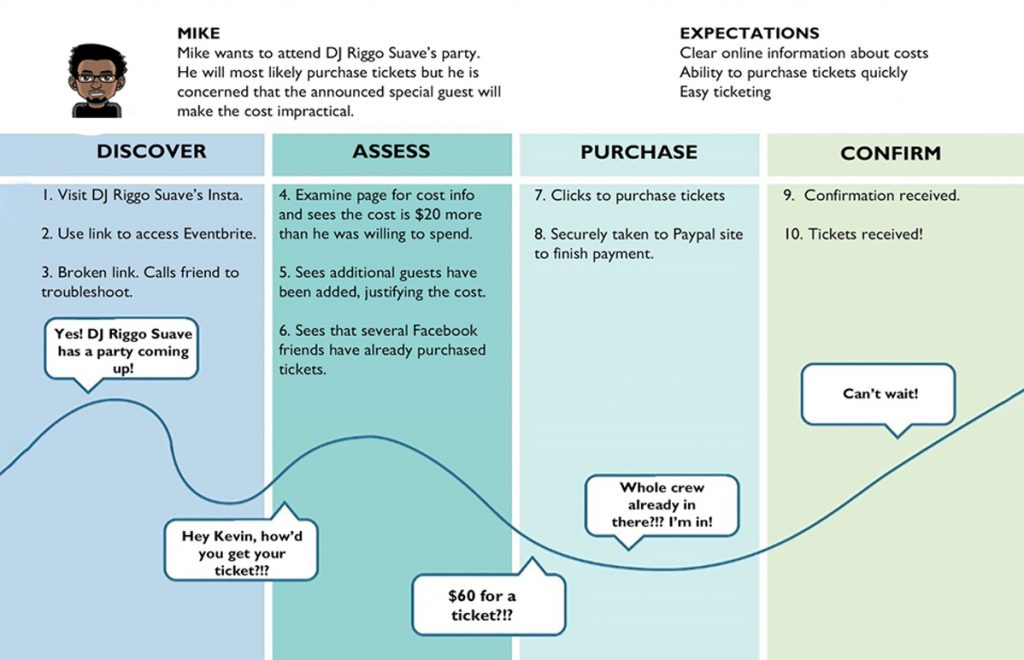
Journey mapping
Once we performed affinity mapping we discovered that even though their pain points were different based upon their personas, they were both coming up with solutions to the same problem.
Overall, the two areas of opportunities for us to help users were
There are two distinctive experiences of Eventbrite users. We highlighted these differences with our two personas.
Persona 1 “Sociable Shelly” has an active social network. She is actively involved with others in the discovery, planning and discussion of various events within their real lives. She has friends and associates that inform her of new and exciting events. Together they discuss plans and challenges with attendance and build excitement for the events. However, these conversations happen outside of Eventbrite. For “Sociable Shelly” Eventbrite is merely a place for obtaining tickets. She thinks of Eventbrite as Ticketmaster or Fandango and does not linger on the site for more time that is necessary to purchase her tickets
Persona 2 “Independent Ian” does not have an active social network. He is more reliant on Eventbrite to help him discover and explore exciting events. If he has any issues he must go to external web sites such as Google or Yelp where he can investigate the authenticity of the organizer and the event. “Independent Ian” spends more time on the Eventbrite site searching for events and compares it to LivingSocial or MeetUp.com. However, he is not finding all the information he needs and can be frustrated by his experience there.
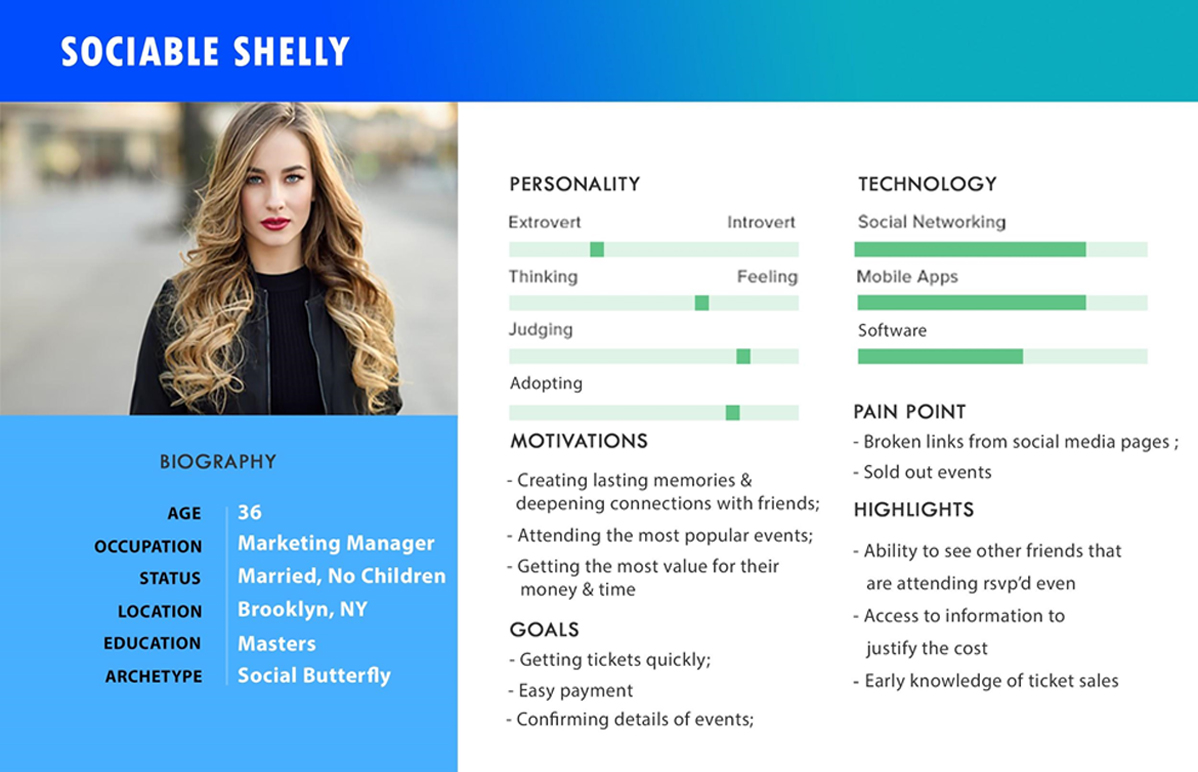
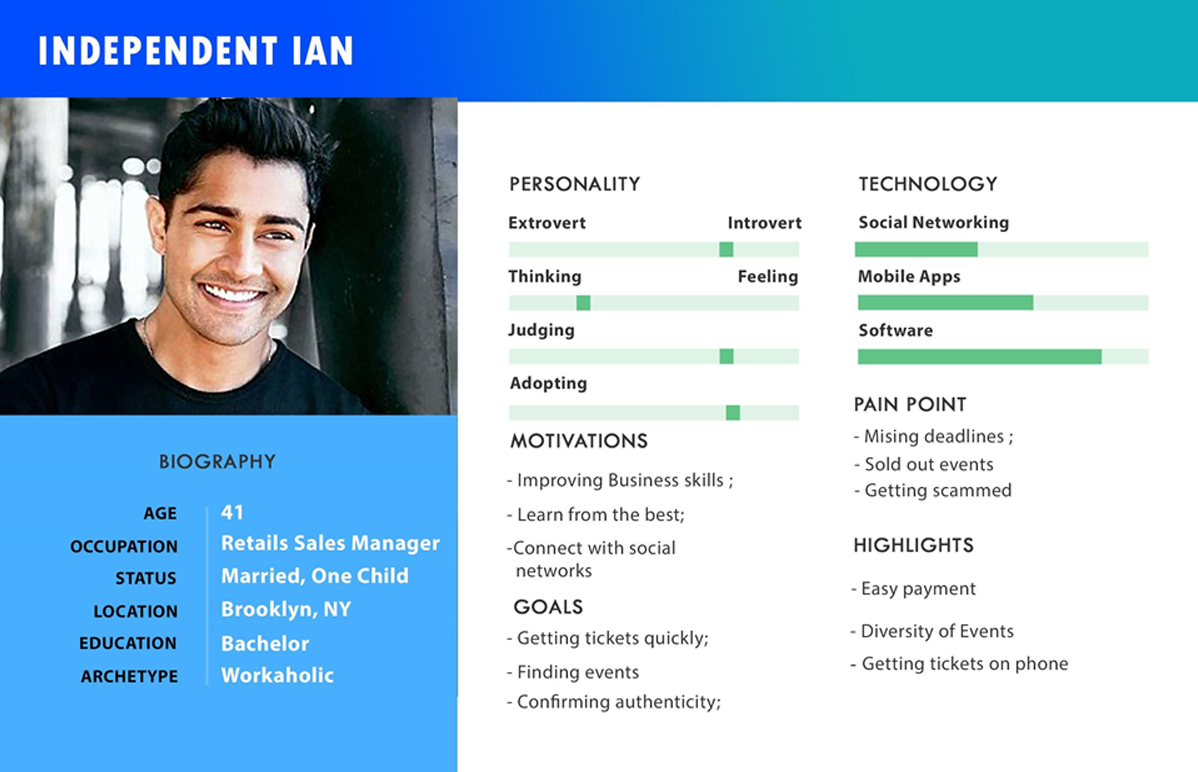
Persona
Users are experiencing uncertainty with the information they are being provided on Eventbrite. An event that looks promising on the site could turn out to be poorly organized, under attended or worse, fraudulent.
Our research goal is to determine how attendees are making the decision to RSVP for events. We wanted to learn if those users would be interested in having additional information about events or event organizers. Would this information aid them in their decision making process? Would it entice them to stay engaged with the site?
The challenge we faced creating a benefit for users was the possibility of hurting Eventbrite organizers. Whatever solution we came up with for the users could not decrease sales or activities for the organizers.
We felt that people were dependent on Eventbrite but were not getting any assurance that the events were safe and reliable. Creating this upgrade to the attendee experience would not only boost the trust of Eventbrite as a place to find great authentic events but also increase engagement throughout the Eventbrite community.
When “Sociable Shelly” had decision making issues — is this event safe, will it be popular, is it worth the cost — she turned to her active social circle. When “Independent Ian” encountered these same decision making issues, he turned to external sites.
We realized that our solution should address both users in a way that would be meaningful to them and create a valuable experience on Eventbrite.
How might we help the users increase their confidence in the event information found on Eventbrite?
Brainstorming ideas to help users feel more confident about event information:
Creating additional rating information and user reviews of event organizers
-Seeing how many people rsvp’d to events and how many seats are available
-Ability to chat with other attendees prior to events
-Creating community pages for specific categories of events
-Creating super user badges for interaction on the site
-Creating a buddy board for contacting people who want to meet up at events
-Links to the background checks of organizers
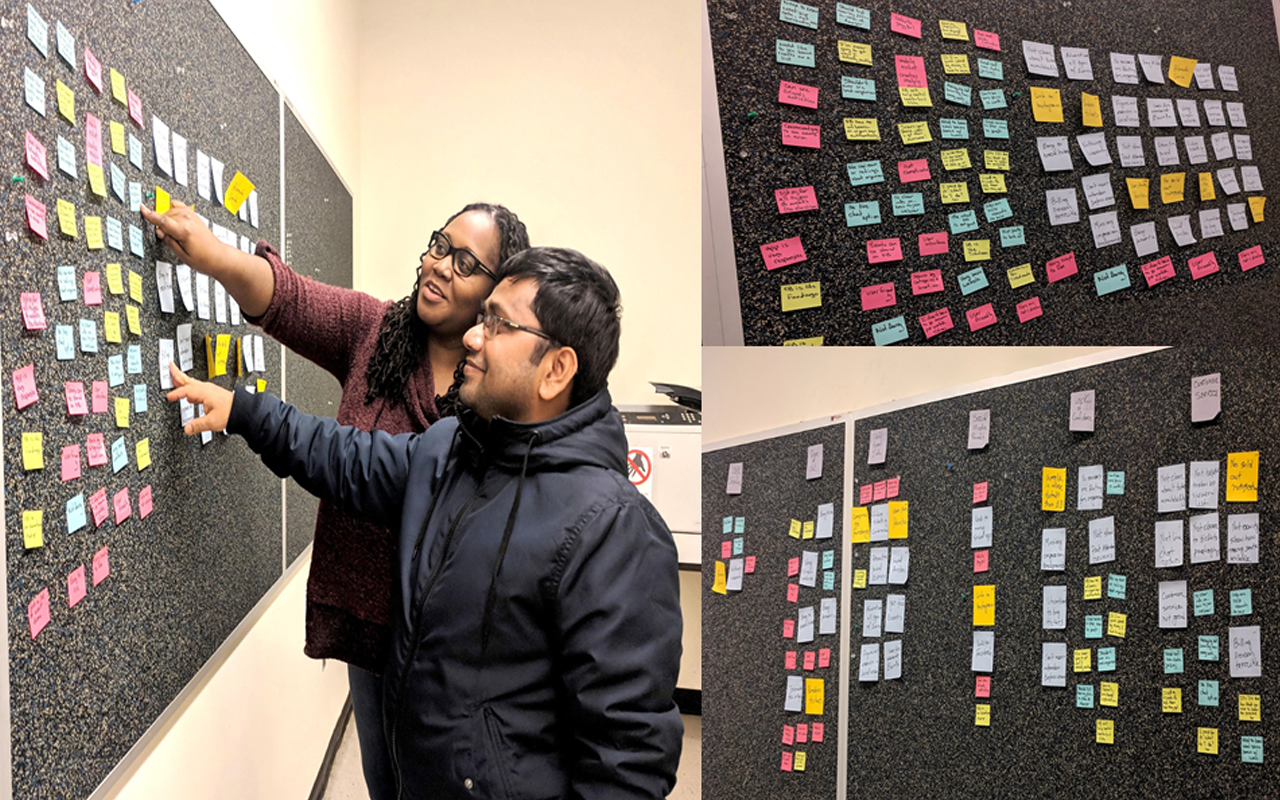
Once we created the storyboard we realized that there was a way for most of our ideas to be used.
We decided that the information that users seek should come from other users. When users had issues they could turn to other users for help and insider knowledge.
Users would be able to see all of the user generated content associated with an organizer in one place.
Once we created the storyboard we realized that there was a way for most of our ideas to be used.
We decided that the information that users seek should come from other users. When users had issues they could turn to other users for help and insider knowledge.
Users would be able to see all of the user generated content associated with an organizer in one place.
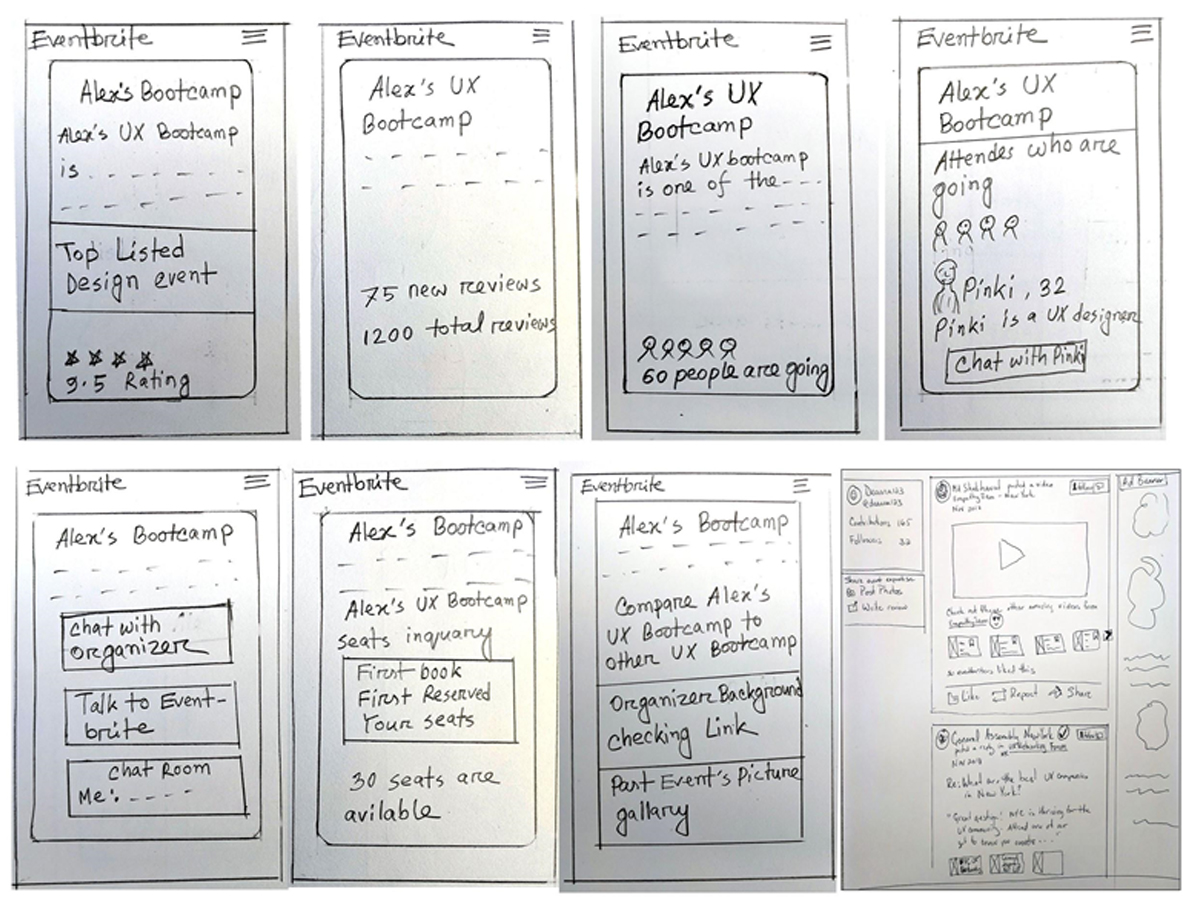
Our prototype shows how we incorporated a new sense of trust with the organizer and the event by giving users access to information from other trusted users:
In the search results page, we added two user generated categories: most popular and top rated.
• Most popular is the number of users that going to the event.
• Top rated is how many likes and reviews, voting system
In the event details page, we added user generated information like user reviews, user chats and a link to the community pages.
• User reviews – Only people who log-in and actually attended events can write reviews
• User chats lets people ask questions from other people going to events
• Community pages where you can see all the things that happened at other events – pictures, videos, reviews, ratings etc.
• Notifications – when people respond to you on reviews, events and send messages

We tested the prototype on two additional Eventbrite users that were not part of the interview group. We gave them the task of finding a specific event by navigating the site and based on the information they were presented with gauged their interest in the new features. They responded positively to the new information. They also hesitated to buy tickets when they saw how many seats were still available. In the next iteration of our prototype, we decided to remove the option to see how many tickets were left because it could potentially hurt the organizers sales goals.

We tested the prototype on two additional Eventbrite users that were not part of the interview group. We gave them the task of finding a specific event by navigating the site and based on the information they were presented with gauged their interest in the new features. They responded positively to the new information. They also hesitated to buy tickets when they saw how many seats were still available. In the next iteration of our prototype, we decided to remove the option to see how many tickets were left because it could potentially hurt the organizers sales goals.
Overall we learned how dependent people are on ticketing apps in general. Eventbrite has made it very easy to manage event going, removing the need to carry cash or tickets or pay at the door. Many times people are sent to Eventbrite just to purchase tickets without even knowing all of the other options available to them.
We were surprised at how minimal the competition is for ticketing sites. People are depending on Eventbrite but they are not always informed about the details of where they are going or who will be there.
Our recommendation would be to build up the community pages. People can add stories, videos or articles in the most popular categories. They would no longer need to go to Twitter or Facebook for event recommendations.
In conclusion, we feel that the future of Eventbrite is as a community hub for events. People will become more engaged on the site writing blogs, posting recommendations, creating social networks and assisting other users make better decisions.